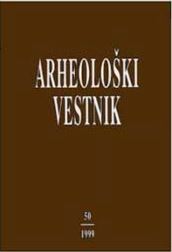The KOR Seriation Program and its applicability in Archaeological Research
Abstract
Here the authors present the results of the first experiments with the KOR scriation program. This is, in both of its versions (KORSO, KOR62), relatively complicated in terms of computations, in comparison with comparable programs, in spite of which, however, it is still sufficiently fast. Apart from this, this program permits a range of modes, with which the user can influence the type and intensity of calculation. It is posited here that it is important to test each of these types of programs on an actual archaeological sample. This was also undertaken. The first results, which are presented here, approximately show the potential of such a seriation method. Both of the seriation programs comprise groups of carriers with identical attributes. KOR62 is faster in this, whilst the groups are more obvious. It offers us more "good" options, from which the most suitable may be selected. Apart from this, the groups can be arranged in stratigraphic order, if material is available from a site where such relationship existed. The program for the definition of groups is, thus, only a tool, whose ultimate success is dependant on the preparation of the initial data set, our abilities to interpret the results achieved and our work steps. However, it cannot denied that the reliability of the program will probably essentially grow with the gaining of experience through the scriation of further sites.
Downloads
Downloads
Published
How to Cite
Issue
Section
License

This work is licensed under a Creative Commons Attribution-NonCommercial-ShareAlike 4.0 International License.
Authors guarantee that the work is their own original creation and does not infringe any statutory or common-law copyright or any proprietary right of any third party. In case of claims by third parties, authors commit their self to defend the interests of the publisher, and shall cover any potential costs.
More in: Submission chapter





